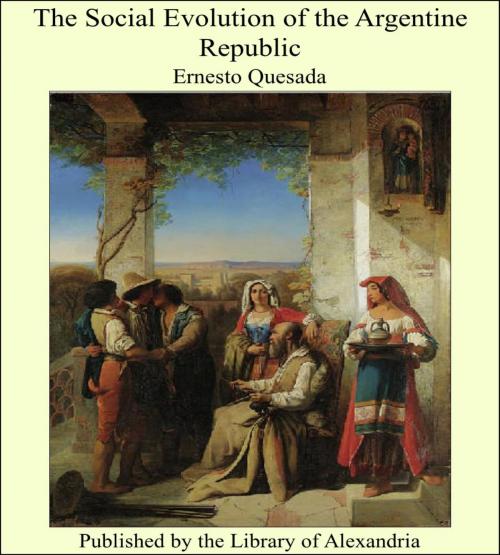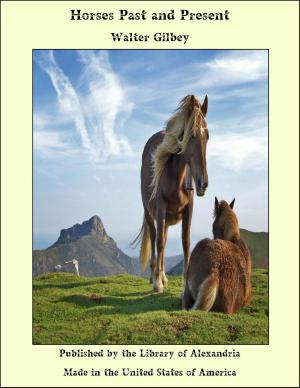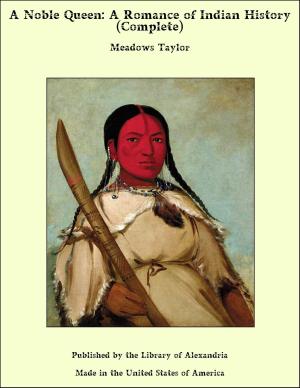The Social Evolution of the Argentine Republic
Nonfiction, Religion & Spirituality, New Age, History, Fiction & Literature| Author: | Ernesto Quesada | ISBN: | 9781465513403 |
| Publisher: | Library of Alexandria | Publication: | March 8, 2015 |
| Imprint: | Language: | English |
| Author: | Ernesto Quesada |
| ISBN: | 9781465513403 |
| Publisher: | Library of Alexandria |
| Publication: | March 8, 2015 |
| Imprint: | |
| Language: | English |
Attorney-General of the Argentine Republic; Professor in the Universities of Buenos Ayres and La Plata. To condense into a few pages several centuries of the history of a nation like the Argentine Republic, to give some idea of the nature of the forces that have determined the development of this country from the end of the sixteenth century, the period of its discovery, to this the second decade of the twentieth, when it is celebrating the first centennial of its independence, is a task at once delicate and arduous. For, aside from these natural difficulties, it will be necessary to avoid all details, to shun statistics, and even to lay aside historical evidence, in order to crystallize into seemingly dogmatic statements, the complicated social evolution of a people in process of transformation, a people still in a formative period. It is a venture bordering upon the impossible. A century after the commencement of the conquest of the American continent and after the scattering over the land of the invading race, at once warlike and religious, an expedition which was purely Andalusian discovered the River Plate in the southern extremity of the continent. Instead of penetrating to the south, the expedition fixed its gaze northward, searching for a route by which to renew relations with the rich district of the old empire of the Incas. This was in obedience to that thirst after wealth which characterized the taking possession of America. Two centuries later, these remote provinces had been converted into the very important viceroyship of the River Plate. In one direction it extended from the tropical viceroyship of Peru and the torrid lands of Portuguese Brazil, to Cape Horn, lashed by the raging Antarctic seas, and in the Other direction it stretched from the chain of the Andes, which runs like a solid wall the length of one of its flanks, to the Atlantic Ocean, which bathes its extensive coasts. This enormous territory thus embraced every sort of climate, and was inhabited by a heterogeneous collection of aboriginal races. Its conquest and colonization had been effected upon two convergent lines, that by water, by the River Plate, that by land, from the north. This impressed upon the civilization of these regions different characteristics which must be defined since, even after a century of political independence, their mark is still stamped upon the ideals, aspirations and conduct of the inhabitants. The "Leyes de Indias,"[2] faithful reflections of the purposes of Spanish colonization in America, show how extraordinary was the importance of the native races, how relatively few were the Spanish conquerors and how closely the two races became mingled, through the regime of the encomiendas[3] the mitas[4] and the yanaconazgos.[5] The Spanish colonies were founded and developed in the midst of a mass of people, who, because of their enormous superiority in point of numbers, necessarily reacted in turn upon the small number of the invaders, either by interbreeding with the latter, or by the contact of daily life, or by their superior adaptability to their natural environment. The conquerors themselves presented different traits, according to the region of Spain from which they came, and naturally they sought to group and to settle themselves in obedience to the ethnic affinities of their origin. Biscayans, Basques, Castillians, Aragonese, Andalusians, etc., gave typical characteristics to every American region where they established themselves. They transplanted their social prejudices, their spirit of communal independence, their concentrated energy and their buoyant temperament. From this it resulted that in whatever corner of America a particular Spanish strain of blood was found, there were reflected the traits of the corresponding district of Spain
Attorney-General of the Argentine Republic; Professor in the Universities of Buenos Ayres and La Plata. To condense into a few pages several centuries of the history of a nation like the Argentine Republic, to give some idea of the nature of the forces that have determined the development of this country from the end of the sixteenth century, the period of its discovery, to this the second decade of the twentieth, when it is celebrating the first centennial of its independence, is a task at once delicate and arduous. For, aside from these natural difficulties, it will be necessary to avoid all details, to shun statistics, and even to lay aside historical evidence, in order to crystallize into seemingly dogmatic statements, the complicated social evolution of a people in process of transformation, a people still in a formative period. It is a venture bordering upon the impossible. A century after the commencement of the conquest of the American continent and after the scattering over the land of the invading race, at once warlike and religious, an expedition which was purely Andalusian discovered the River Plate in the southern extremity of the continent. Instead of penetrating to the south, the expedition fixed its gaze northward, searching for a route by which to renew relations with the rich district of the old empire of the Incas. This was in obedience to that thirst after wealth which characterized the taking possession of America. Two centuries later, these remote provinces had been converted into the very important viceroyship of the River Plate. In one direction it extended from the tropical viceroyship of Peru and the torrid lands of Portuguese Brazil, to Cape Horn, lashed by the raging Antarctic seas, and in the Other direction it stretched from the chain of the Andes, which runs like a solid wall the length of one of its flanks, to the Atlantic Ocean, which bathes its extensive coasts. This enormous territory thus embraced every sort of climate, and was inhabited by a heterogeneous collection of aboriginal races. Its conquest and colonization had been effected upon two convergent lines, that by water, by the River Plate, that by land, from the north. This impressed upon the civilization of these regions different characteristics which must be defined since, even after a century of political independence, their mark is still stamped upon the ideals, aspirations and conduct of the inhabitants. The "Leyes de Indias,"[2] faithful reflections of the purposes of Spanish colonization in America, show how extraordinary was the importance of the native races, how relatively few were the Spanish conquerors and how closely the two races became mingled, through the regime of the encomiendas[3] the mitas[4] and the yanaconazgos.[5] The Spanish colonies were founded and developed in the midst of a mass of people, who, because of their enormous superiority in point of numbers, necessarily reacted in turn upon the small number of the invaders, either by interbreeding with the latter, or by the contact of daily life, or by their superior adaptability to their natural environment. The conquerors themselves presented different traits, according to the region of Spain from which they came, and naturally they sought to group and to settle themselves in obedience to the ethnic affinities of their origin. Biscayans, Basques, Castillians, Aragonese, Andalusians, etc., gave typical characteristics to every American region where they established themselves. They transplanted their social prejudices, their spirit of communal independence, their concentrated energy and their buoyant temperament. From this it resulted that in whatever corner of America a particular Spanish strain of blood was found, there were reflected the traits of the corresponding district of Spain















